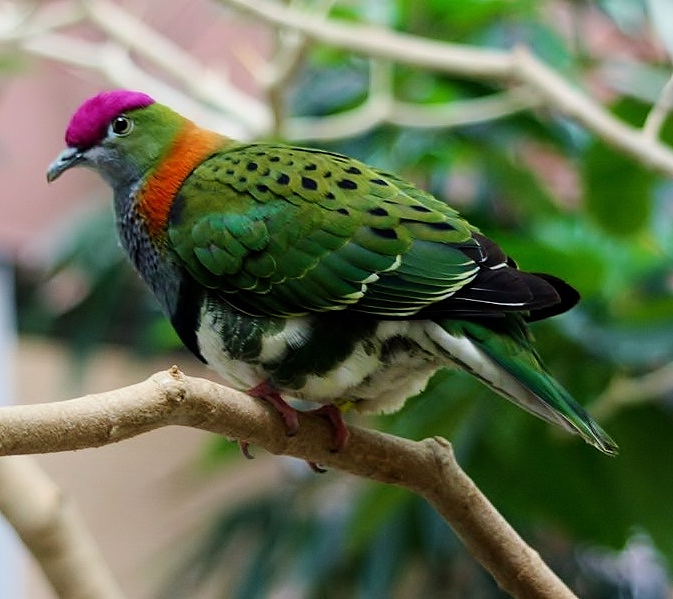 |
| Photo by Neil Turner (Wikipedia) |
Common name:
superb fruit-dove (en); pombo-da-fruta-pintado (pt); ptilope superbe (fr); tilopo soberbio (es); prachtfruchttaube (de)
Taxonomy:
Order Columbiformes
Family Columbidae
Range:
This species is found in eastern Indonesia, in Papua-New Guinea and along the north-eastern coast of Australia from northern Queensland to northern New South Wales.
Size:
These birds are 21-24 cm long and weigh 80-145 g.
Habitat:
The superb fruit-dove is found in rainforests, along rainforests edges and in mangroves, often along rivers and streams. They are also found in plantations and even within urban areas. This species is found from sea level up to an altitude of 1.600 m.
Diet:
They feed almost exclusively on fruits and berries, namely figs Ficus albipila and Ficus benjamina, Canarium australianum drupes, and Archontophoenix, Calamus and Livistona palm fruit, also the fruits Litsea, Neolitsea Cryptocarya, Cananga odorata, Syzygium and Vitex cofassus. Sometimes they also take seeds and small insects.
Breeding:
Superb fruit-doves breed in September-January. The nest flimsy platform of twigs, placed in a tree or vine 5-30 m above the ground. There the female lays 1 white eggs which is incubated by both sexes for 14 days. The chicks are raised by both parents and fledge as early as 7 days after hatching.
Conservation:
IUCN status – LC (Least Concern)
This species has a very large breeding range and is described as common throughout most of this range. The population is suspected to be stable in the absence of evidence for any declines or substantial threats.







